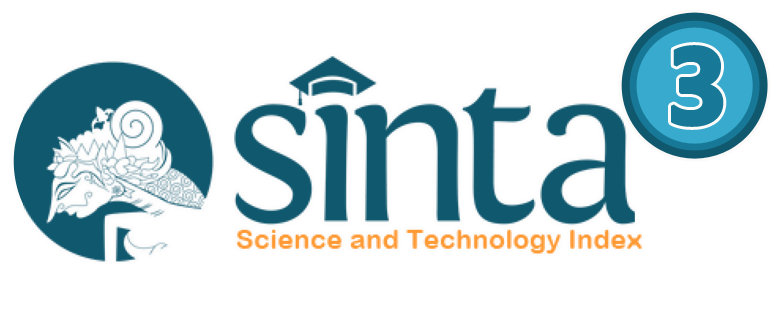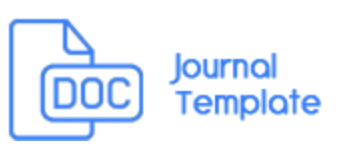Living a Post-Disaster Life: The Role of Cultural Adaptability, Coping Strategies, and Spiritual Support on Resilience Among Families Affected by the Semeru Eruption
DOI:
https://doi.org/10.18326/ijip.v6i2.2431Keywords:
Family resilience, Disaster recovery, Volcanic Eruption, Semeru, Semeru eruption SurvivorAbstract
This research delved into the key determinants influencing family resilience in the aftermath of the Semeru volcano eruption. Catastrophic events like volcanic eruptions often create immense psychological and material challenges for affected families. Using a qualitative approach, this study conducts in-depth interviews with families residing in the Huntap-Huntara resettlement area of Lumajang Regency. The findings highlight three essential components of family resilience—belief systems, organisational structure, and communication coupled with problem-solving abilities—which are crucial in helping families recover. These components are shaped by both internal and external factors, including 1) flexible roles and cultural adaptability, 2) disaster-specific coping strategies, and 3) religious and spiritual support. Despite the uneven distribution of aid and the challenges of relocation, these resilience factors enable families to navigate post-disaster life. The study offers insights for future research and suggests potential psychological interventions to strengthen family resilience in similar contexts.
References
F. Rizky, “Warga Sebut Tak Ada Peringatan Dini Saat Semeru Erupsi.” Accessed: Dec. 27, 2024. [Online]. Available: https://news.detik.com/berita-jawa-timur/d-5841041/warga-sebut-tak-ada-peringatan-dini-saat-semeru-erupsi
M. Aminudin, “Update Erupsi Semeru: Korban Tewas Jadi 46 Jiwa, 9 Masih Hilang.” Accessed: Dec. 27, 2024. [Online]. Available: https://nasional.sindonews.com/read/625819/15/update-erupsi-semeru-korban-tewas-jadi-46-jiwa-9-masih-hilang-1639267938
M. Gayatri and D. K. Irawaty, “Family Resilience during COVID-19 Pandemic: A Literature Review,” Family Journal, vol. 30, no. 2, pp. 132–138, 2022, doi: 10.1177/10664807211023875.
P. Divsalar and T. Dehesh, “Prevalence and Predictors of Post-Traumatic Stress Disorder and Depression Among Survivors Over 12 Years After the Bam Earthquake,” Neuropsychiatr Dis Treat, vol. 16, pp. 1207–1216, 2020, doi: 10.2147/NDT.S252730.
W. Hendriani, Resiliensi Psikologis : Sebuah Pengantar. Jakarta: Prenada, 2018.
B. M. McDermott and V. E. Cobham, “Family functioning in the aftermath of a natural disaster,” BMC Psychiatry, vol. 12, no. 1, pp. 1–7, May 2012, doi: 10.1186/1471-244X-12-55/TABLES/3.
Sriyono, Nursalam, and Hamzah, “The resilience of families who live in a disaster-prone location in terms of disaster preparedness: A scoping review,” International Journal of Psychosocial Rehabilitation, vol. 24, no. 7, pp. 9215–9225, 2020.
A. Puspitasari and D. V. S. Kaloeti, “Factors Affecting Family Resilience of Health Workers During the COVID-19 Pandemic: A Systematic Literature,” Ieomsociety.Org, no. 2020, pp. 3201–3209, 2021, [Online]. Available: http://ieomsociety.org/proceedings/2021indonesia/575.pdf
A. N. Wibowo, “STUDI DESKRIPTIF TINGKAT RESILIENSI PENYINTAS LANSIA ERUPSI GUNUNG SEMERU DI DESA SUMBERMUJUR, LUMAJANG,” Jurnal Keperawatan Muhammadiyah, vol. 7, no. 3, p. 2022, 2022, doi: 10.30651/JKM.V7I3.15923.
P. M. Rahmawati, Suhari, A. Astuti, and Musyiro, “Resiliensi Masyarakat Terdampak Erupsi Gunung Semeru di Era Pandemi COVID-19,” in e - Prosiding Kolokium Hasil Penelitian dan Pengabdian Kepada Masyarakat Periode I Tahun 2022, 2022, pp. 93–96.
F. Walsh, Strengthening family resilience (Third edition), Third Edit. New York: The Guilford Press, 2016.
A. Herdianto and R. Kusumiati, “HUBUNGAN DUKUNGAN SOSIAL TERHADAP RESILIENSI KELUARGA DI MASA PANDEMI PADA RT 05 RW 08 KELURAHAN SALATIGA KECAMATAN SIDOREJO KOTA SALATIGA,” Jurnal Cakrawala Ilmiah, vol. 2, no. 7, pp. 2943–2956, Mar. 2023, doi: 10.53625/JCIJURNALCAKRAWALAILMIAH.V2I7.5280.
G. Gumelar, Z. Akbar, R. D. Suryaratri, H. Erchanis, and L. D. Wahyuni, “The Effect of Family Resilience towards Household Disaster Preparedness in Coastal Coast District of Sumur, Banten,” IOP Conf Ser Earth Environ Sci, vol. 448, no. 1, 2020, doi: 10.1088/1755-1315/448/1/012085.
W. Hendriani, “Protective factors in the attainment of resilience in persons with disability,” Masyarakat, Kebudayaan dan Politik, vol. 31, no. 3, p. 291, 2018, doi: 10.20473/mkp.v31i32018.291-299.
H. Bakic and D. Ajdukovic, “Resilience after natural disasters: the process of harnessing resources in communities differentially exposed to a flood,” Eur J Psychotraumatol, vol. 12, no. 1, 2021, doi: 10.1080/20008198.2021.1891733.
E. A. Bogdan, C. McDonald-Harker, E. M. Bassi, and T. J. Haney, “Holding together after disaster: The role of social skills in strengthening family cohesion and resilience,” Fam Relat, vol. 72, no. 4, pp. 2194–2214, Oct. 2023, doi: 10.1111/FARE.12791.
M. Aksyar et al., “Resiliensi Masyarakat Penyintas Bencana Alam di Desa Tompe Kecamatan Sirenja Kabupaten Donggala,” Syntax Literate ; Jurnal Ilmiah Indonesia, vol. 8, no. 5, pp. 3168–3175, May 2023, doi: 10.36418/SYNTAX-LITERATE.V8I5.11876.
K. Khatimah and S. R. R. Pudjiati, “Posttraumatic Growth: The Role of Trauma Exposure and Family Hardiness Against Pasigala Liquefaction Survivors,” Analitika: Jurnal Magister Psikologi UMA, vol. 14, no. 2, pp. 132–142, Dec. 2022, doi: 10.31289/ANALITIKA.V14I2.8123.
J. J. Bogardi and A. Fekete, “Disaster-Related Resilience as Ability and Process: A Concept Guiding the Analysis of Response Behavior before, during and after Extreme Events,” Am J Clim Change, vol. 07, no. 01, pp. 54–78, 2018, doi: 10.4236/ajcc.2018.71006.
W. Anggraini and W. Hendriani, “Resiliensi Istri terhadap Perubahan Kondisi Suami menjadi Penyandang Disabilitas Fisik,” Jurnal Psikologi Klinis dan Kesehatan Mental, vol. 4, no. 1, pp. 50–58, 2015.
S. R. R. Pudjiati, S. H. D. Reksodiputro, and R. U. Purwono, “Family Resilience Model: The Influence of Cultural Identity, Coping, Family Strain, Socioeconomic Status, and Community Support on Family Resilience among the Batak Toba Ethnic Group,” Makara Human Behavior Studies in Asia, vol. 25, no. 2, pp. 153–169, 2021, doi: 10.7454/hubs.asia.1131121.
M. C. Weber, J. M. Pavlacic, E. A. Gawlik, S. E. Schulenberg, and E. M. Buchanan, “Modeling resilience, meaning in life, posttraumatic growth, and disaster preparedness with two samples of Tornado survivors,” Traumatology (Tallahass Fla), vol. 26, no. 3, pp. 266–277, 2020, doi: 10.1037/trm0000210.
W. Wang, N. Z. Foutz, and G. G. Gao, “Huddling with families after disaster: Human resilience and social disparity,” PLoS One, vol. 17, no. 9 September, pp. 1–14, 2022, doi: 10.1371/journal.pone.0273307.
L. Z. Azizah, Moh. A. Yusuf, and S. F. Thohar, “Koping Kultural dalam Proses Kebangkitan Pasca Bencana (Studi Etnometodologi pada Penyintas Kebakaran Pasar PonTrenggalek),” Happiness: Journal of Psychology and Islamic Science, vol. 3, no. 2, pp. 1–21, 2019, doi: 10.30762/happiness.v3i2.358.
W. Hendriani, “Positive Meaning: the Typical Coping of Resilient Person Towards Changing Conditions Become Individual With Disability,” IJDS:Indonesian Journal of Disability Studies, vol. 5, no. 2, pp. 157–165, 2018, doi: 10.21776/ub.ijds.2018.005.02.2.
M. Ghufron and A. H. F. Anto, “Islamic Therapy and Spiritual Emotional Freedom Technique (SEFT) Interventions in Reducing Post-Traumatic Stress Disorder (PTSD) for Survivors of Mount Semeru Eruption,” INFERENSI: Jurnal Penelitian Sosial Keagamaan, vol. 17, no. 2, pp. 207–232, Dec. 2023, doi: 10.18326/INFSL3.V17I2.207-232.
M. Lomeli-Rodriguez, E. Parrott, A. Bernardino, A. Rahman, Y. Direzkia, and H. Joffe, “Psychological Resilience Following Disasters: A Study of Adolescents and Their Caregivers,” J Loss Trauma, vol. 0, no. 0, pp. 1–32, 2024, doi: 10.1080/15325024.2024.2391903.
Downloads
Published
Issue
Section
License
Copyright (c) 2024 IJIP : Indonesian Journal of Islamic Psychology

This work is licensed under a Creative Commons Attribution-ShareAlike 4.0 International License.

 Indonesian Journal of Islamic Psycology is licensed under a
Indonesian Journal of Islamic Psycology is licensed under a 


